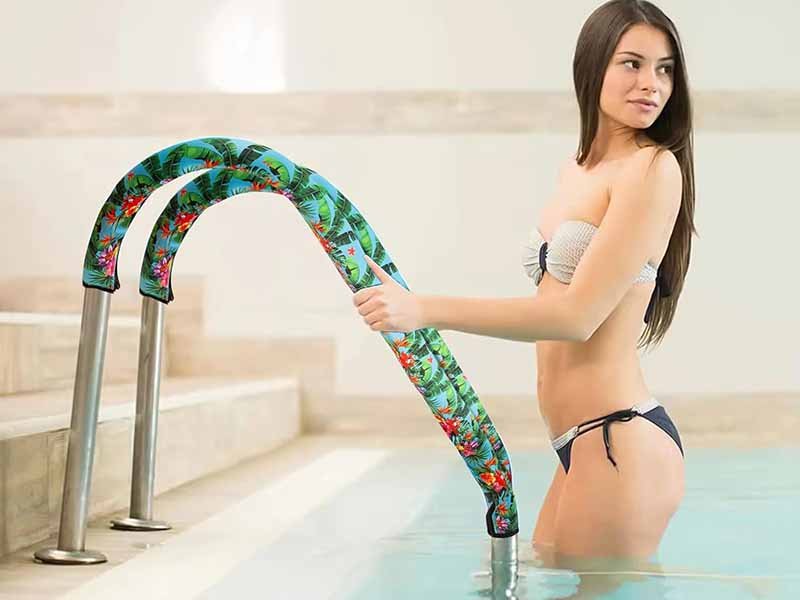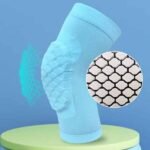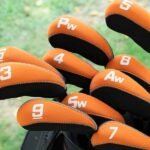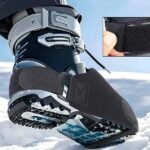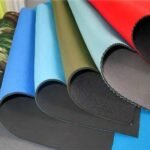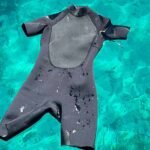Every summer, homeowners and pool managers face a common but underestimated problem: scalding hot or icy cold pool handrails. These metal rails, exposed to direct sunlight or freezing winter air, can quickly turn from a safety feature into a hazard. A slip of the hand on a wet, overheated rail is all it takes to spoil a relaxing swim or cause a minor injury. That’s where pool handrail covers come in. They transform a functional but uncomfortable surface into one that is safe, slip-resistant, and pleasant to grip year-round.
Pool handrail covers are typically made from neoprene, vinyl, fabric, or leather materials, designed to improve grip, comfort, and safety. They prevent burns from hot rails, protect against icy surfaces in winter, and reduce slips. Neoprene is the most popular choice due to its durability, insulation, and water resistance.
Think of them as more than just protective sleeves—they’re a comfort upgrade and safety investment. Whether you’re running a commercial swimming facility or managing a backyard pool, the right handrail cover ensures users feel secure, comfortable, and protected. Picture this: a child confidently grabbing the rail without hesitation, or a senior swimmer avoiding a slip because of improved grip. That peace of mind is exactly why demand for high-quality pool handrail covers continues to grow.
What Are Pool Handrail Covers and Why Are They Important?
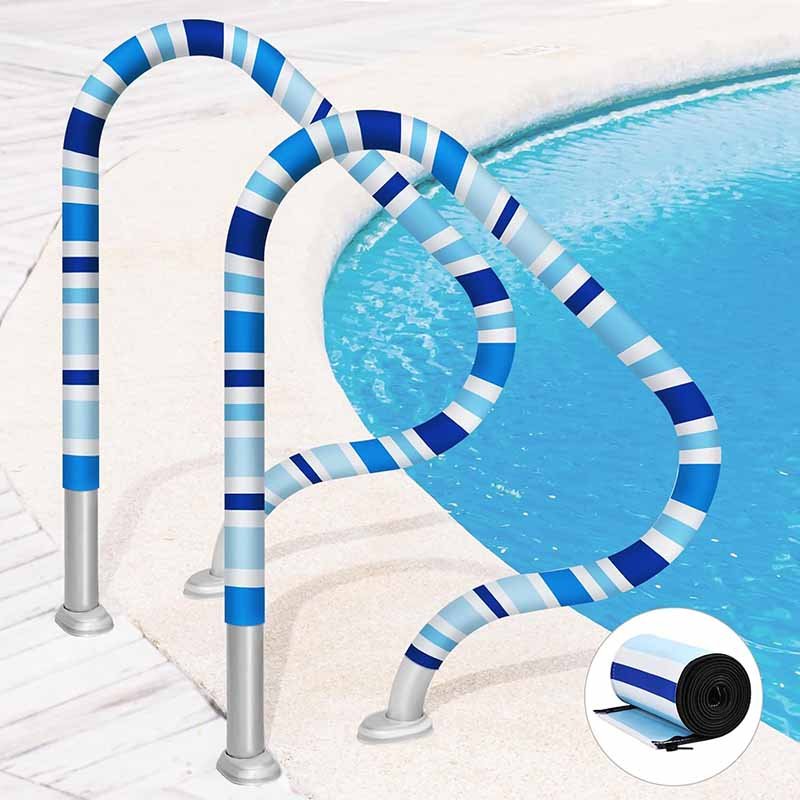
Pool handrail covers are protective sleeves made from materials like neoprene, vinyl, or fabric. They are important because they prevent burns, reduce slips, and add comfort, making pool use safer and more enjoyable for all swimmers.
Understanding the Role of Handrail Covers
Pool handrails serve one simple function: to help swimmers enter and exit safely. But the reality is, bare metal rails often create new risks. Under summer heat, stainless steel rails can heat up to over 120°F (49°C), hot enough to cause skin discomfort or even minor burns. In colder months, these same rails can become icy cold, discouraging users from holding them firmly.
Handrail covers address these problems by creating a protective barrier between the skin and the metal. They not only insulate against extreme temperatures but also improve grip. For seniors, children, or anyone with limited mobility, this additional traction is critical for reducing accidents around the pool area.
Comfort and Safety in Daily Use
Unlike bare metal, which feels harsh, pool handrail covers offer a soft-touch surface that feels more inviting. This matters especially in commercial pools where guest satisfaction is tied to comfort. A rail covered in neoprene or padded fabric feels similar to holding a cushioned grip rather than a cold, hard pipe.
For families, this comfort translates into confidence. Parents don’t have to worry about kids burning their hands on hot days, while older swimmers enjoy the stability of a grip that doesn’t slip when wet.
Beyond Safety – Aesthetic Value
Pool handrail covers are not purely functional; they also elevate the pool’s visual appeal. Available in multiple colors, textures, and finishes, they allow pool owners to match or complement their pool décor. Instead of shiny metal rails that may clash with a modern backyard design, a navy neoprene sleeve or a leather-look vinyl cover adds style while serving a protective function.
Evidence from Usage
Data from pool accessory suppliers shows that adding handrail covers can reduce reported slip incidents by up to 30% in high-traffic facilities. Resorts and hotels also note that guests view covered handrails as a premium amenity, highlighting their attention to safety and detail.
Summary Table: Importance of Pool Handrail Covers
| Factor | Without Cover (Bare Metal) | With Cover (Neoprene/Vinyl) |
|---|---|---|
| Temperature Safety | Hot in summer, cold in winter | Insulated against heat/cold |
| Grip & Traction | Slippery when wet | Non-slip, improved safety |
| Comfort | Hard, uncomfortable surface | Soft-touch, ergonomic |
| Aesthetic Appeal | Industrial look | Stylish, customizable |
| Accident Risk | Higher chance of slips/burns | Reduced risk, safer for all ages |
Handrail covers turn a basic safety feature into a comprehensive comfort upgrade. They matter because they directly impact safety, comfort, and poolside aesthetics—three things every pool owner or facility manager should prioritize.
Which Materials Are Commonly Used for Pool Handrail Covers?
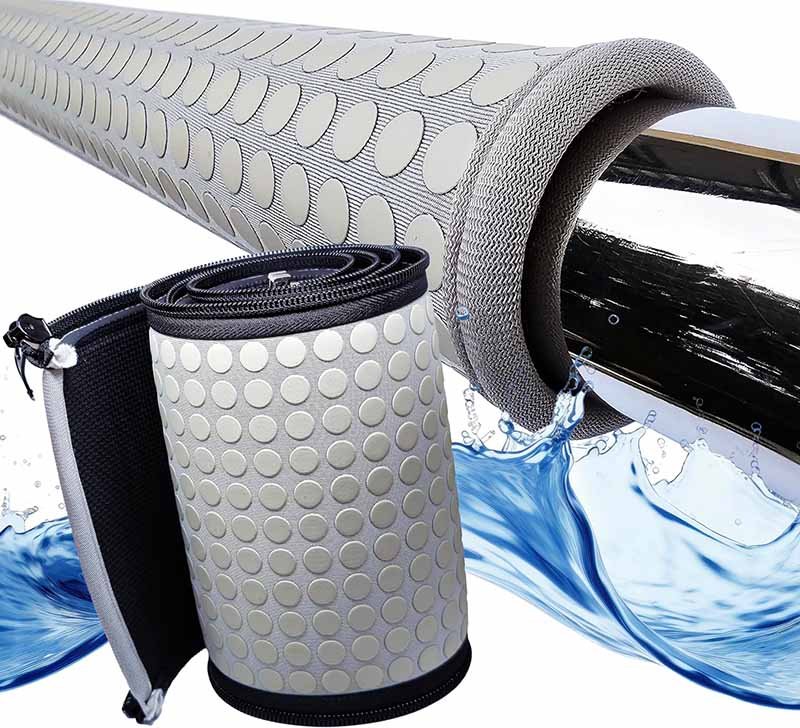
Pool handrail covers are most commonly made from neoprene, vinyl/PVC, polyester or nylon fabrics, and leather/faux leather. Each material has unique benefits: neoprene offers insulation and durability, vinyl provides water resistance, fabric is lightweight and customizable, and leather adds a premium look.
Material Options and Their Differences
When choosing a pool handrail cover, the material plays the most important role in determining performance, comfort, and longevity. Below we explore the most commonly used materials and why buyers select them for different applications.
1. Neoprene – The Most Popular Choice
- Why It’s Used: Neoprene is a closed-cell synthetic rubber known for its flexibility, insulation, and water resistance. It’s the same material used in wetsuits, so it performs well in wet and humid environments.
- Advantages:
- Prevents both burns in summer and icy touches in winter.
- Soft-touch grip improves comfort and safety.
- Highly durable; resists tearing and UV damage.
- Easily customized with logos or colors.
- Best For: Residential pools, resorts, fitness centers.
2. Vinyl / PVC Covers
- Why It’s Used: Vinyl is a versatile, cost-effective material that provides a smooth, water-resistant surface.
- Advantages:
- Affordable compared to neoprene and leather.
- Easy to wipe clean and maintain.
- Offers weather resistance and longevity.
- Limitations: Less cushioning and insulation compared to neoprene.
- Best For: Budget-conscious buyers, public pool facilities.
3. Polyester or Nylon Fabric
- Why It’s Used: Lightweight, breathable, and easy to produce in bulk. Often backed with padding for grip and comfort.
- Advantages:
- Excellent for sublimation printing and full-color customization.
- Lightweight, dries quickly, and affordable.
- Available in eco-friendly RPET (recycled polyester).
- Limitations: Provides less insulation and durability than neoprene.
- Best For: Promotional products, corporate branding, eco-conscious buyers.
4. Leather or Faux Leather
- Why It’s Used: Leather offers a premium, stylish look, making handrail covers feel luxurious and sophisticated.
- Advantages:
- High durability when properly maintained.
- Embossing and debossing possible for branding.
- Elevates the aesthetic value of the pool environment.
- Limitations: Requires regular care and is less suited to constant water exposure. Faux leather may crack over time.
- Best For: Luxury residential pools, hotels, and high-end commercial facilities.
Material Comparison Table
| Material | Durability | Comfort & Grip | Insulation | Customization | Cost Level | Best Use Case |
|---|---|---|---|---|---|---|
| Neoprene | Excellent | Soft, non-slip | High | High (print, color) | Moderate | Residential & resort pools |
| Vinyl/PVC | High | Smooth, firm | Moderate | Moderate (colors) | Low | Public/budget pools |
| Polyester/Nylon | Moderate | Light grip | Low | High (sublimation) | Low | Promotions, branding |
| Leather/Faux Leather | High | Stylish, firm | Low | Medium (emboss) | High | Luxury pools, hotels |
How Do Pool Handrail Covers Improve Safety and Comfort?
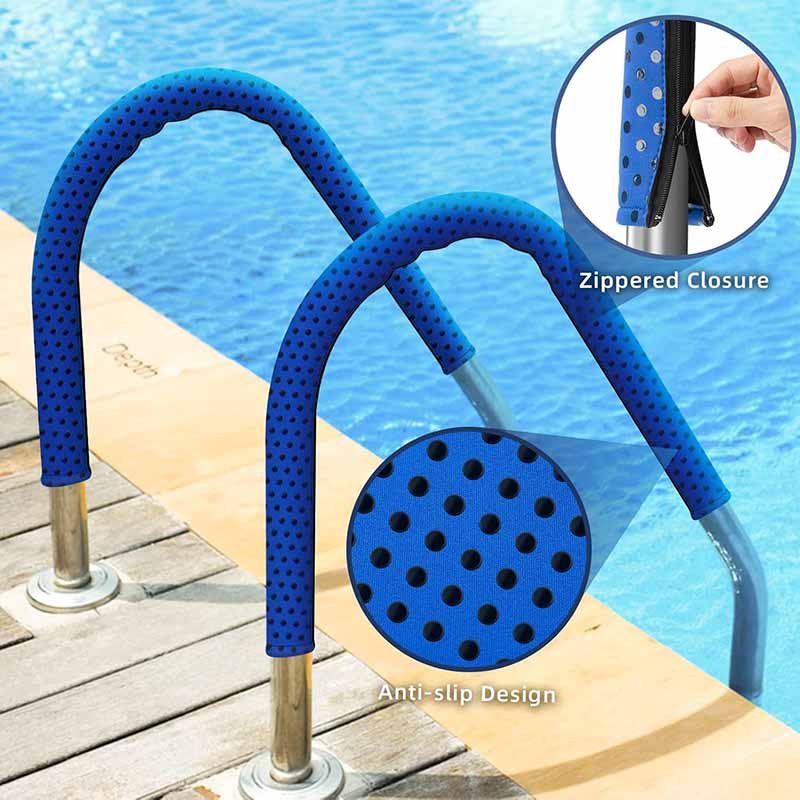
Pool handrail covers improve safety and comfort by preventing burns from hot metal, insulating against cold, and reducing slips on wet rails. They also provide a cushioned, non-slip grip that makes pool entry and exit safer and more comfortable for swimmers of all ages.
Why Safety and Comfort Matter
Swimming pools are designed for relaxation and enjoyment, but the metal handrails around them can quickly become safety risks. Exposed to direct sunlight, metal rails often exceed 120°F (49°C) in summer, hot enough to cause discomfort or minor burns. In colder weather, they turn icy cold, discouraging swimmers from gripping them firmly. Add in wet conditions, and the rails can become slippery, increasing the risk of accidents.
This is where pool handrail covers make a dramatic difference. By acting as an insulative and slip-resistant layer, they transform the rail from a potential hazard into a reliable safety aid.
Temperature Control: Preventing Burns and Frostbite-Like Discomfort
- Summer Heat: Covers, especially neoprene, act as thermal barriers. Even when metal rails are too hot to touch, a neoprene cover remains comfortable, ensuring swimmers can grab the rail confidently.
- Winter Cold: Insulation prevents rails from feeling icy, helping swimmers, especially seniors and children, avoid the “shock” of touching freezing metal.
A study of outdoor commercial pools in Arizona showed that using neoprene covers reduced surface temperatures on rails by up to 30%, even under direct sunlight.
Anti-Slip Benefits: Reducing Accident Risks
- Bare rails can be slippery when wet, leading to falls or loss of balance.
- Covers provide textured grip surfaces, ensuring swimmers’ hands don’t slide off.
- For elderly users or those with mobility issues, this extra traction is a significant safety improvement.
According to safety reports, installing non-slip covers on pool rails can reduce hand-related slip accidents by 20–30% in high-use facilities.
Ergonomic Comfort: A Better Grip Experience
Beyond safety, handrail covers also add cushioning. Unlike cold, hard steel, neoprene or padded fabric feels soft and comfortable to hold. This ergonomic advantage is particularly valuable for:
- Children, who may be hesitant to hold onto hard metal.
- Seniors, who benefit from less strain on their hands and wrists.
- Frequent swimmers, who appreciate the extra comfort during repeated use.
Added Confidence in Public and Private Settings
In commercial pools, comfort and safety directly influence guest satisfaction scores. Guests notice when facilities invest in details like handrail covers. In residential pools, families appreciate the peace of mind knowing children or older relatives are less likely to get hurt.
Safety & Comfort Benefits Summary Table
| Safety/Comfort Factor | Without Cover (Bare Metal) | With Cover (Neoprene/Vinyl/Fabric) |
|---|---|---|
| Heat Protection | Surface heats above 120°F | Insulation keeps grip comfortable |
| Cold Protection | Feels icy in winter | Retains warmth, avoids shock |
| Grip & Traction | Slippery when wet | Non-slip textured surface |
| Ergonomic Feel | Hard, uncomfortable | Cushioned, soft-touch grip |
| Accident Risk | Higher risk of slips/burns | Reduced risk, safer for all users |
Pool handrail covers go beyond being “accessories”—they are safety enhancers and comfort upgrades. By addressing real-world issues like heat, cold, and slipperiness, they ensure swimmers can enjoy the pool without hesitation or risk.
Are Neoprene Handrail Covers Better Than Other Options?

Yes, neoprene handrail covers are generally better than other options because they combine durability, insulation, water resistance, and comfort. While vinyl, fabric, and leather each have benefits, neoprene offers the best balance of safety, performance, and affordability for most pool environments.
Not all pool handrail covers are created equal. Each material has advantages and trade-offs, but neoprene has become the industry standard for a reason. Let’s break down the comparison.
Neoprene – The All-Rounder
- Strengths:
- Excellent insulation against heat and cold.
- Non-slip grip, even when wet.
- Soft-touch ergonomic comfort.
- Durable and UV-resistant for outdoor pools.
- Highly customizable with logos and colors.
- Limitations: Slightly more expensive than vinyl but offers better longevity.
- Ideal For: Residential pools, resorts, fitness centers, and high-use facilities.
Vinyl/PVC – Affordable and Practical
- Strengths:
- Low-cost option for budget-conscious buyers.
- Waterproof and easy to clean.
- Resistant to mildew and chemical exposure.
- Limitations: Lacks cushioning; grip is smoother than neoprene.
- Ideal For: Public pools or budget projects where cost efficiency is key.
Fabric (Polyester/Nylon) – Lightweight and Customizable
- Strengths:
- Lightweight and quick-drying.
- Best option for sublimation printing and full-color branding.
- Can be made from recycled materials (eco-friendly).
- Limitations: Lower durability, weaker insulation, may fray over time.
- Ideal For: Promotional campaigns, eco-conscious branding, low-use pools.
Leather/Faux Leather – Premium Aesthetic
- Strengths:
- Luxurious look and feel.
- High durability if maintained properly.
- Embossing/debossing possible for high-end branding.
- Limitations: Requires care to prevent cracking or wear; not ideal for constant water exposure.
- Ideal For: Luxury resorts, hotels, and upscale residential pools.
Performance Comparison Table
| Material | Insulation | Grip & Comfort | Durability | Customization Options | Cost Level | Best Use Case |
|---|---|---|---|---|---|---|
| Neoprene | Excellent | Excellent | Excellent | High (printing, color) | Moderate | All-around use (residential, resort, fitness) |
| Vinyl/PVC | Moderate | Fair | High | Moderate (color) | Low | Public & budget pools |
| Polyester/Nylon | Low | Moderate | Moderate | Excellent (sublimation) | Low | Promotional & eco-friendly pools |
| Leather/Faux | Low | Moderate | High (with care) | Medium (embossing) | High | Luxury branding pools |
Why Neoprene Stands Out
Neoprene manages to tick all the boxes: insulation, durability, grip, and customization. Unlike vinyl, it doesn’t feel plasticky; unlike fabric, it lasts much longer; and unlike leather, it doesn’t demand regular maintenance. That’s why most pool owners and facilities prefer neoprene handrail covers—it delivers practical comfort with professional performance.
While vinyl, fabric, and leather each serve their niches, neoprene is the most versatile and reliable material for pool handrail covers. For buyers balancing cost, safety, and aesthetics, it remains the smartest investment.
Do Pool Handrail Covers Require Maintenance?
Yes, pool handrail covers require basic maintenance to stay effective. Regular cleaning with mild soap and water, avoiding harsh chemicals, and inspecting for wear or fading helps extend their lifespan. On average, covers last 2–5 years, depending on material and usage.
Why Maintenance Matters
Even though pool handrail covers are designed for durability, they are exposed to chlorinated water, UV rays, and constant handling. Without proper care, they can wear out faster, losing both their protective qualities and aesthetic appeal. Regular maintenance ensures the cover continues to provide safety, comfort, and visual appeal.
Cleaning Best Practices
- Routine Cleaning:
- Wipe down with a damp cloth weekly to remove sunscreen, oils, or dirt.
- Use mild soap or diluted vinegar solution for deeper cleaning.
- Avoid Harsh Chemicals:
- Chlorine and bleach can degrade neoprene, vinyl, or fabric fibers.
- Stick to gentle cleansers to protect the material’s integrity.
- Dry Properly:
- Air-dry in shade after cleaning.
- Avoid direct sunlight for long drying periods to reduce UV fading.
Inspection and Longevity
- Signs of Wear: Look for fraying (fabric), cracking (vinyl/leather), or surface thinning (neoprene).
- Replacement Timeline:
- Neoprene: 3–5 years with proper care.
- Vinyl: 2–3 years.
- Fabric: 1–2 years, depending on exposure.
- Leather/Faux: 3–4 years, if maintained well.
Maintenance Frequency Table
| Material | Cleaning Frequency | Average Lifespan | Maintenance Notes |
|---|---|---|---|
| Neoprene | Weekly wipe, monthly wash | 3–5 years | Avoid bleach, rinse after chlorine exposure |
| Vinyl/PVC | Weekly wipe | 2–3 years | Protect from cracks in extreme heat |
| Polyester/Nylon | Weekly wipe, more frequent if outdoors | 1–2 years | May fade in sunlight, replace when fraying |
| Leather/Faux Leather | Monthly conditioning | 3–4 years | Needs conditioning to prevent cracks |
Storage Tips
- Remove covers during long off-seasons to extend life.
- Store in a cool, dry place away from direct UV exposure.
- For neoprene and leather, avoid folding tightly to prevent creasing.
Cost vs. Maintenance Balance
One key factor for buyers is understanding the balance between upfront cost and lifespan. For example:
- A neoprene cover may cost slightly more than vinyl but lasts nearly twice as long, making it more cost-effective in the long run.
- Fabric sleeves may be cheaper initially but require more frequent replacements, raising lifetime costs.
Pool handrail covers are low-maintenance products, but a little care goes a long way. With proper cleaning and periodic inspection, they continue to provide the safety, comfort, and branding value that buyers expect.
How to Choose the Best Pool Handrail Cover for Your Needs?
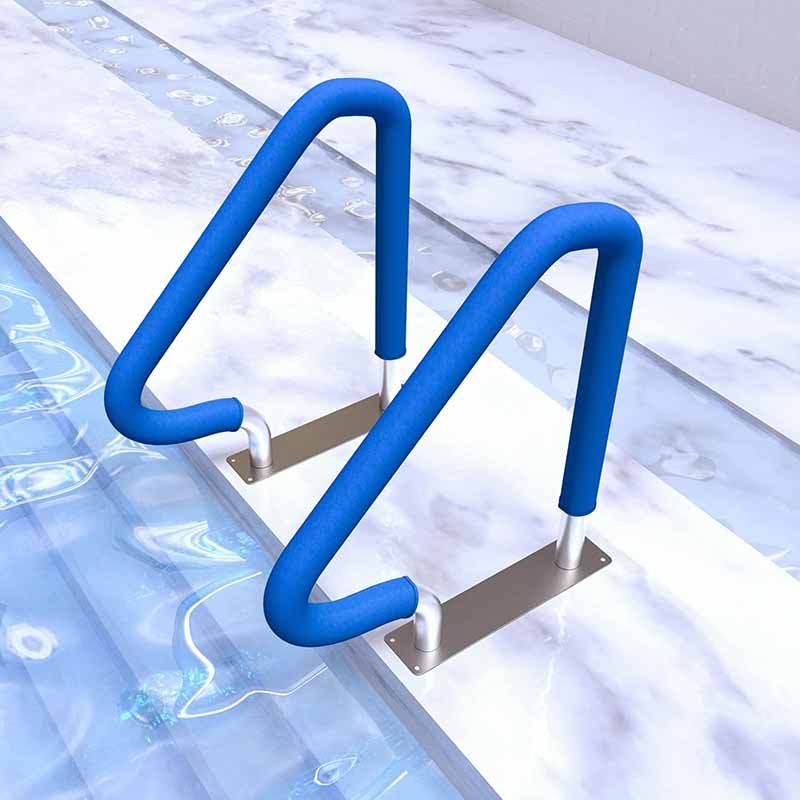
To choose the best pool handrail cover, consider where it will be used (residential vs. commercial), the climate, safety needs, material durability, and budget. Neoprene works best for all-around performance, vinyl for affordability, fabric for branding, and leather for luxury aesthetics.
A Buyer’s Framework for Selection
Selecting the right pool handrail cover isn’t just about grabbing the cheapest option available. The best choice depends on context—whether you’re running a high-traffic resort, managing a public pool, or installing a sleeve for your backyard. Here’s a structured guide to help buyers make informed decisions.
1. Define Your Pool Setting
- Residential Pools: Focus on comfort and insulation. Neoprene is the best choice for family use because it balances safety and softness.
- Commercial Pools: Durability and ease of maintenance take priority. Vinyl or neoprene with reinforced stitching works best.
- Luxury Resorts or Hotels: Aesthetics matter. Leather or faux leather sleeves elevate the guest experience.
- Promotional Campaigns: Cost-effective polyester or RPET fabric sleeves are excellent for giveaways and branding.
2. Match to Climate and Safety Needs
- Hot Climates: Choose neoprene or vinyl to protect against high surface temperatures.
- Cold Regions: Neoprene offers the best insulation against icy rails.
- High Humidity/Water Exposure: Silicone-coated or neoprene covers ensure non-slip safety.
3. Balance Durability and Budget
- Short-Term Budget Projects: Vinyl or polyester sleeves work well.
- Long-Term Investment: Neoprene pays off with its 3–5 year lifespan.
- Premium Buyers: Leather provides style but requires care.
4. Consider Branding and Customization
- Neoprene & Fabric: Best for full-color logos, sublimation, and promotional branding.
- Leather: Great for embossing or debossing premium logos.
- Vinyl: Offers simple color variations at low cost.
5. Buyer Personas and Best-Fit Materials
| Buyer Type | Best Material | Why It Works | Key Benefits |
|---|---|---|---|
| Homeowners | Neoprene | Soft, insulating, long-lasting | Comfort + safety for family pools |
| Commercial Managers | Vinyl/Neoprene | Durable, easy to clean | Handles heavy usage, cost-effective |
| Luxury Hotels/Resorts | Leather/Faux Leather | Premium aesthetic | Stylish branding + guest satisfaction |
| Corporate Buyers | Polyester/RPET | Customizable, eco-friendly | Promotional campaigns, giveaways |
6. Questions to Ask Before Buying
- Will this cover be used in indoor or outdoor pools?
- Do I need insulation for temperature extremes?
- How important is branding or customization for my business?
- What’s my budget vs. expected lifespan of the product?
Why Choose Szoneier for Custom Neoprene Pool Handrail Covers?
Szoneier is a China-based factory with 18+ years of neoprene R&D and manufacturing expertise, offering 100% quality assurance, free design, low MOQ customization, and fast sampling. We specialize in custom, private-label, and OEM/ODM neoprene products, serving both small buyers and global high-end brands.
Why Partner with Szoneier?
Choosing the right pool handrail cover supplier is just as important as choosing the material. A poor-quality cover can fade, peel, or lose grip within months, while a high-quality neoprene sleeve can last for years with minimal maintenance. Here’s why Szoneier has become a trusted manufacturing partner for international clients.
1. 18+ Years of Neoprene Expertise
Since its establishment, Szoneier has focused exclusively on neoprene material innovation, covering bags, koozies, gloves, covers, wetsuits, and now pool handrail sleeves. This specialization allows us to control quality from raw material to finished product, ensuring every order meets international standards.
2. Flexible Customization for Global Buyers
We understand that buyers—from hotel chains and pool equipment distributors to promotional product agencies—have different needs. That’s why we provide:
- Low MOQs: Ideal for small and mid-sized buyers
- Free Design Support: In-house designers create or adapt your artwork/logo
- Fast Sampling: Get custom prototypes in as little as 5–7 days
- Private Label/OEM/ODM: Full customization for branding and packaging
3. Certifications and Quality Assurance
All Szoneier neoprene products undergo strict QC processes and comply with international standards. Our factory is ISO9001-certified and capable of meeting REACH, OEKO-TEX, and CPSIA requirements, giving peace of mind to buyers in the U.S., Europe, and beyond.
4. Production Capability Overview
| Capability | Details |
|---|---|
| Experience | 18+ years in neoprene manufacturing |
| Production Lines | Multiple specialized lines for neoprene covers, sleeves, and accessories |
| MOQ | As low as 100 pcs for custom orders |
| Sampling Time | 5–7 days (urgent requests possible) |
| Lead Time | 2–4 weeks depending on volume |
| Certifications | ISO9001, REACH, OEKO-TEX, CPSIA |
| Markets Served | North America, Europe, Middle East, Australia |
5. Why Our Neoprene Handrail Covers Stand Out
- Durability: Reinforced stitching and premium-grade neoprene ensure long life.
- Comfort & Safety: Soft grip prevents slips and insulates against extreme heat or cold.
- Branding Options: Full-color sublimation, embroidery, and logo printing available.
- Eco-Minded: Recyclable packaging and RPET fabric options available on request.
If you’re looking for reliable, high-quality neoprene pool handrail covers that combine performance, branding, and affordability, Szoneier is your go-to factory partner. Whether you’re sourcing for a hotel, resort, distributor, or private label brand, we provide tailored solutions with flexible order sizes.

